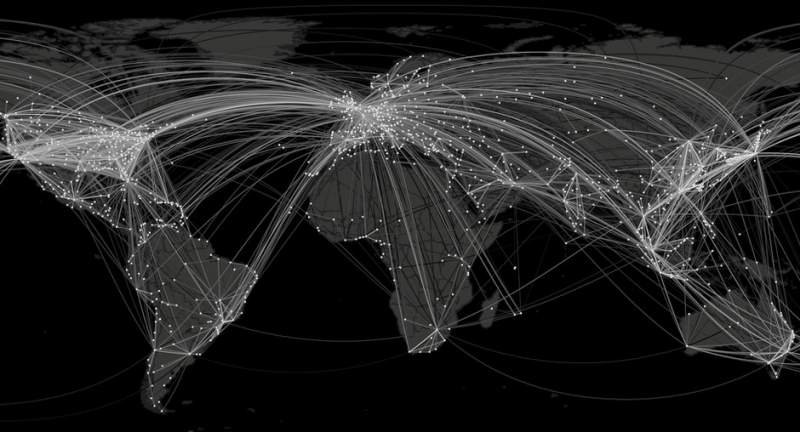How AI Can Help Manage Infectious Diseases
With the capability to analyze huge amounts of data, including medical information, human behavior patterns, and environmental conditions, big data tools can be invaluable in dealing with deadly outbreaks.
By Malcom Ridgers, BairesDev
Though COVID-19 currently dominates the news, infectious diseases aren’t a new story, as humanity has faced these outbreaks throughout history. What is new, however, are the digital tools that scientists and public health agencies now have at their disposal.
Artificial Intelligence (AI) and machine learning can assist with infectious disease prevention, management, and surveillance. With the capability to analyze huge amounts of data, including medical information, human behavior patterns, and environmental conditions, big data tools can be invaluable in dealing with deadly outbreaks.
Early Warning
The first AI-supported entity to sound the alarm about the novel coronavirus was Blue Dot, a Canadian health monitoring platform. Kamran Khan, Blue Dot’s founder and CEO and an infectious disease specialist, was inspired to find a better way to track diseases after his experience treating patients in Toronto during the 2003 SARS outbreak.
Launched in 2014, Blue Dot uses algorithms to conduct automated infectious disease surveillance, predict the emergence and spread of diseases, and give advance warnings about danger zones. The company sent word to its clients about a flu-like virus in Wuhan, China on December 31, 2019, before the World Health Organization (WHO), which sent out a statement on January 9, or the U.S. Centers for Disease Control and Prevention (CDC), which reported it on January 6.
The Blue Dot platform uses natural language processing and machine learning to analyze 100,000 news stories and animal and plant disease reports in 65 languages every day, working around the clock. After AI conducts the data sifting, epidemiologists check the conclusions before sending out reports to government agencies, businesses, and public health experts.
Tracking the Spread
Once scientists detect new diseases, the next step is to figure out where they’re heading next. AI can assist with that phase too. For instance, Blue Dot’s analysis of airline ticketing data and flight paths accurately predicted that COVID-19 would jump from Wuhan to Bangkok, Seoul, Taipei, and Tokyo.
Other examples include AI-enabled systems that help doctors detect the spread of a disease as new patients enter the hospital and rapid diagnoses, aided by machine learning, that enable effective isolation and quarantine efforts.
Effective Resource Distribution
When responding to infectious disease outbreaks, public health officials make difficult decisions about how and where to allocate scarce resources. AI can guide those decisions to make them as efficient and effective as possible.
Once AI predicts where a disease will travel next, officials can set up travel checkpoints and call for a ramp-up of hospital resources in the right places. Researchers who combine AI with simulation models can assess the effectiveness of various policy responses.
Additionally, AI algorithms can determine what populations would best benefit from public health communications to prevent or slow disease. A team at the USC Viterbi School of Engineering created such an algorithm, using real tuberculosis data, that takes into account human behavior patterns and disease transmission. Officials have used similar algorithms to help prevent HIV and Hepatitis C.
Development of Drugs and Vaccines
To identify the most promising compounds for drug testing, scientists use AI to analyze billions of them, compressing years of traditional research into weeks. Medical researchers, assisted by AI, analyze virus genomes to more quickly develop vaccines, in part by detecting mutations as they emerge.
In the case of COVID-19, the analysis might initially prove challenging, given that AI requires large quantities of data, yet the information currently available is limited. It may take another 6-12 months to have sufficient peer-reviewed data to create the most effective algorithms.
Predicting Future Outbreaks
Over the past couple of decades, 75% of the infectious diseases the CDC has documented have been zoonotic – that is, capable of spreading from animals to humans. In the past, by the time scientists identified host species, the disease had already leaped to humans, leaving mitigation as the only response.
Researchers now use AI to identify the ecological and epidemiological patterns that lead up to epidemics to predict outbreaks before they happen. Mathematical models and machine learning can analyze huge amounts of data to get clues about the next likely source of infection. These predictions help ecologists protect and monitor possible host species, potentially preventing future outbreaks.
For example, teams at the Cary Institute for Ecosystem Studies have created a computer model to choose rodent species with high disease-carrying potential. The model scanned 2,277 species and found 58 likely potential hosts, two of which have now been confirmed to harbor pathogens. The organization also used AI and machine learning to predict which types of bats could carry filoviruses like Ebola with a model that uses 57 factors (e.g., life history, ecology data) to calculate predictions.
In Summary
The expanded use of AI and machine learning has enabled scientists, businesses, and governments to prevent or better manage outbreaks of infectious diseases, resulting in reduced harm and disruption. While everyone is focused on COVID-19, AI can keep an eye on other possible outbreaks around the world, so we’ll be prepared to respond if needed.
Bio: Malcom Ridgers is a tech expert specializing in the software outsourcing industry. He has access to the latest market news and has a keen eye for innovation and what's next for technology businesses.
Related:
- COVID-19 Visualized: The power of effective visualizations for pandemic storytelling
- How Kubeflow Can Add AI to Your Kubernetes Deployments
- Can Java Be Used for Machine Learning and Data Science?

